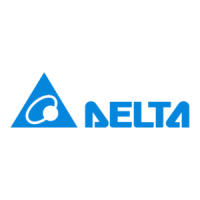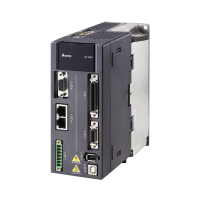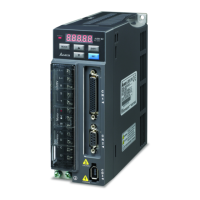AH Motion Controller – Operation Manual
4-2
4.1 Quick Start
The section provides a simple example, and leads users to create a traditional ladder diagram in ISPSoft in a short time.
In order to help users quickly understand the functions provided by ISPSoft, and create a traditional ladder diagram,
programming concepts related to IEC 61131-3 are not introduced in this section. For example, POUs, function blocks,
variables, and etc. are not introduced. The concepts related to IEC 61131-3 will be introduced in the following chapters.
4.1.1 Example
When the equipment operates, the parts on the conveyer are conveyed from left to right. If a sensor senses that a part is
under an injector, the PLC will send a trigger signal to the injector, and the injector will injects the glue. How long the part
will be injected is set externally, and is not controlled by the program in the PLC. However, the program in the PLC must
be able to turn the trigger signal OFF so that the trigger signal can be sent next time. There are two injectors above the
conveyer, and the two injectors inject glue in the same way.
Besides, there is a sensor at the left side of the conveyer. When a part passes the sensor, the sensor value increases by
one increment. If the sensor value is 100, the internal completion flag will be set to ON. The state of the flag can be used
by other procedures later. However, the use of the state of the flag is not introduced in this example.
4.1.2 Hardware
In this example, the CPU module used is AHxxEMC-5A, the digital I/O module used is AH16AP11R-5A, and the
backplane used is AHBP05M2-5A. The table below is an I/O allocation table.
Trigger signal for injector 1
Trigger signal for injector 2
